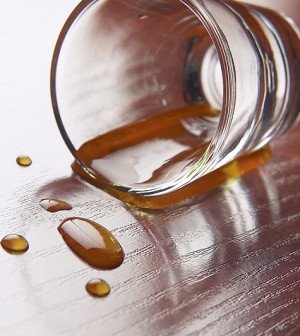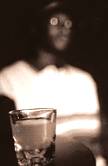- Double Mastectomy May Offer No Survival Benefit to Women With Breast Cancer
- Toxic Lead Found in Cinnamon Product, FDA Says
- Certain Abbott Blood Sugar Monitors May Give Incorrect Readings
- Athletes Can Expect High Ozone, Pollen Counts for Paris Olympics
- Fake Oxycontin Pills Widespread and Potentially Deadly: Report
- Shingles Vaccine Could Lower Dementia Risk
- Your Odds for Accidental Gun Death Rise Greatly in Certain States
- Kids From Poorer Families Less Likely to Survive Cancer
- Tough Workouts Won’t Trigger Cardiac Arrest in Folks With Long QT Syndrome
- At-Home Colon Cancer Test Can Save Lives
Flushed Complexion After Drinking Could Point to High Blood Pressure Risk


TUESDAY Nov. 19, 2013If your face turns red after a few drinks, it could be a sign of added risk for alcohol-linked high blood pressure, new research suggests.
It was already known that excessive drinking is a risk factor for high blood pressure, say researchers reporting online Nov. 18 in the journal Alcoholism: Clinical & Experimental Research. Experts have also known that facial flushing after drinking is tied to higher sensitivity or even intolerance to alcohol.
In the new study, the South Korean research team examined the medical records of more than 1,700 men and divided them into three groups: non-drinkers, people whose faces flushed after drinking and drinkers who didn’t have the flushed-face reaction.
“Flushers” were more apt to have drinking-related high blood pressure than non-flushers, the research found, and the risk of high blood pressure was much higher among flushers who had more than four drinks per week.
“Facial flushing after drinking is always considered as a symptom of high alcohol sensitivity or even intolerance to alcohol, unless a patient is taking special medicine,” study author Jong Sung Kim, head of the department of family medicine at Chungnam National University School of Medicine in South Korea, said in a journal news release.
“The facial flushing response to drinking usually occurs in a person who cannot genetically break down acetaldehyde, the first metabolite of alcohol,” Kim explained.
According to the authors, facial flushing after drinking could serve as a signal for a greater risk of alcohol-linked high blood pressure.
Based on the new data, doctors should “consider evaluating their patients’ flushing response to alcohol, as well as drinking amount, in daily routine care,” Kim said.
More information
The U.S. National Institute on Alcohol Abuse and Alcoholism has more about alcohol and your health.
Source: HealthDay
Copyright © 2024 HealthDay. All rights reserved.










